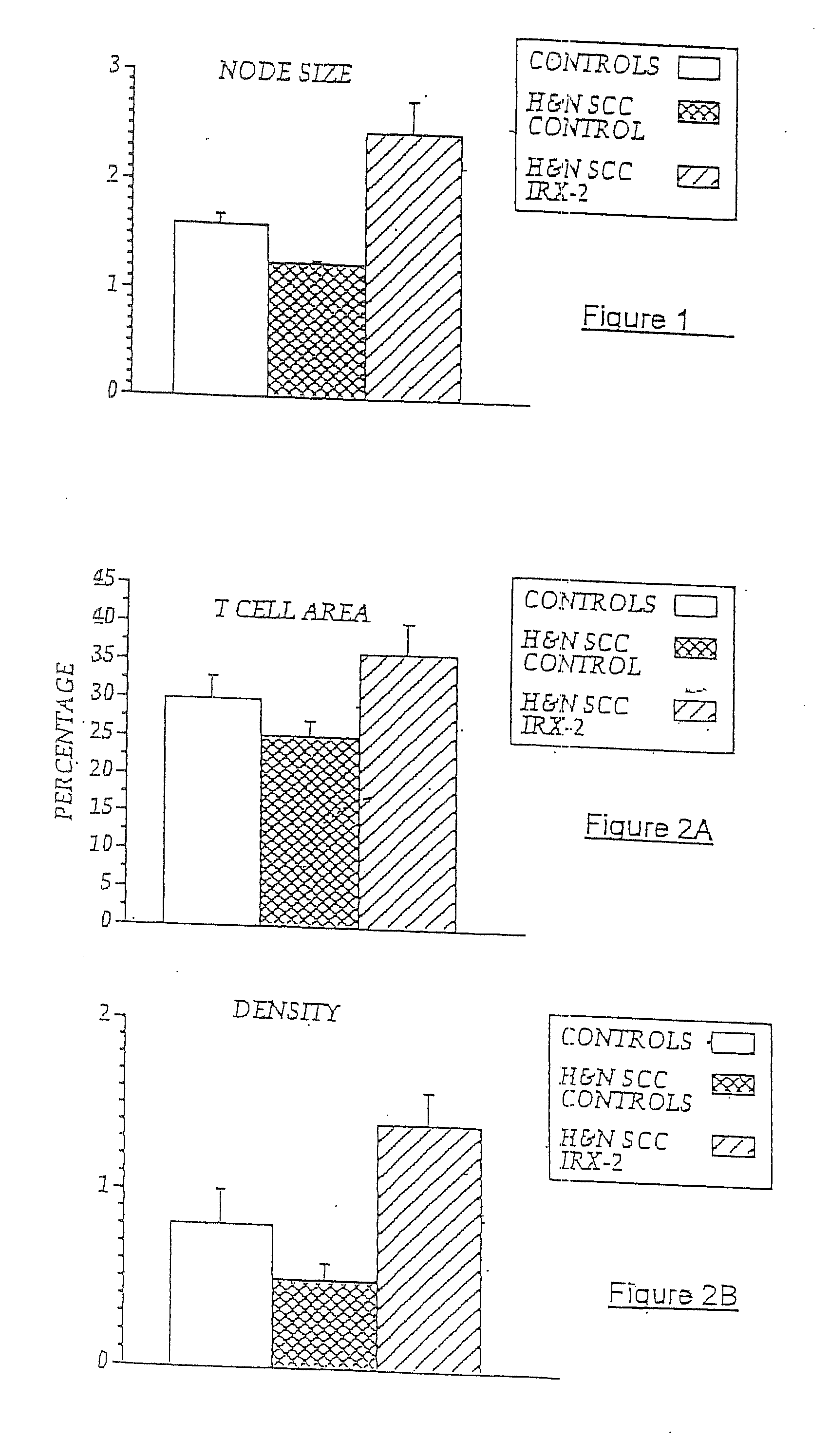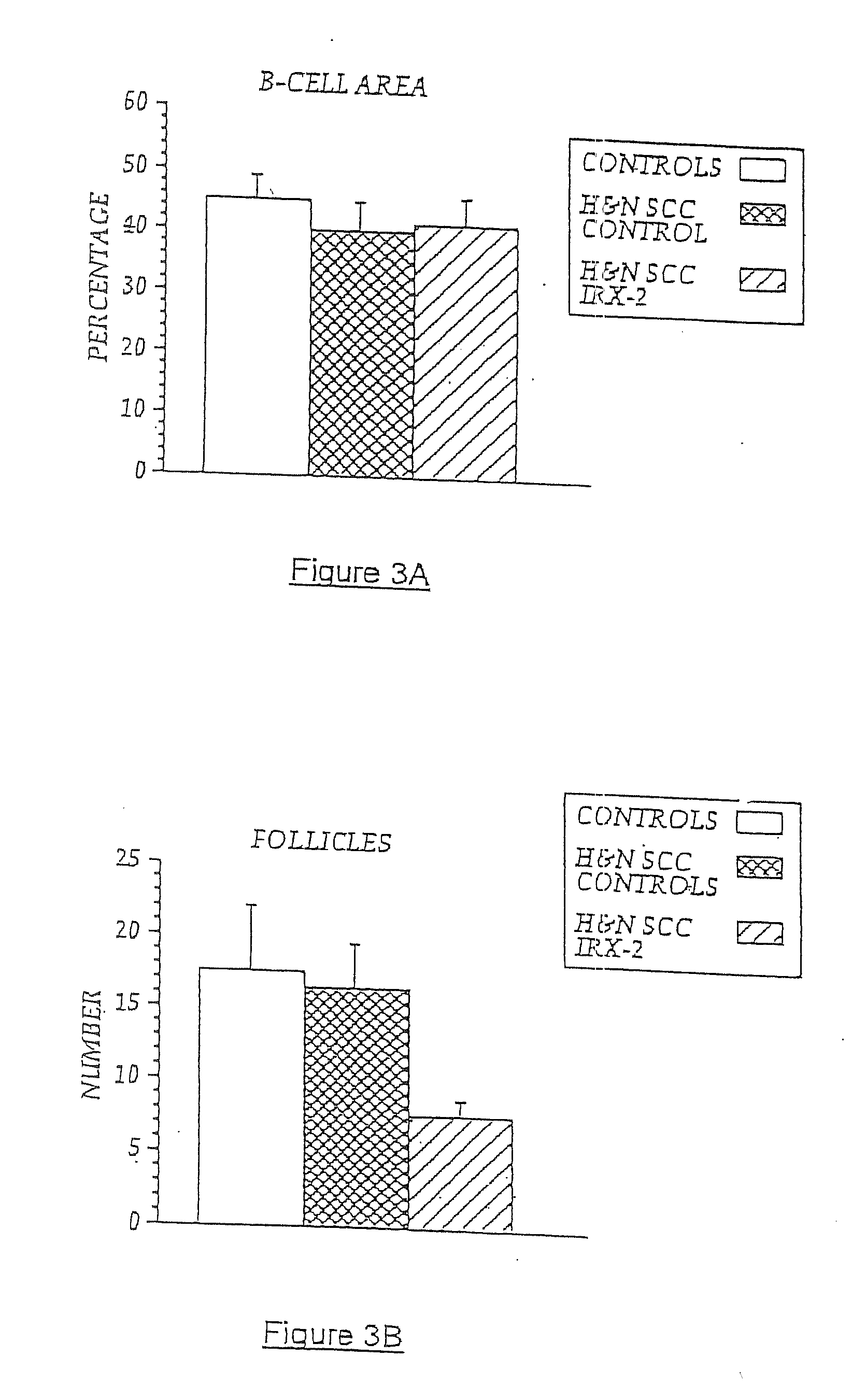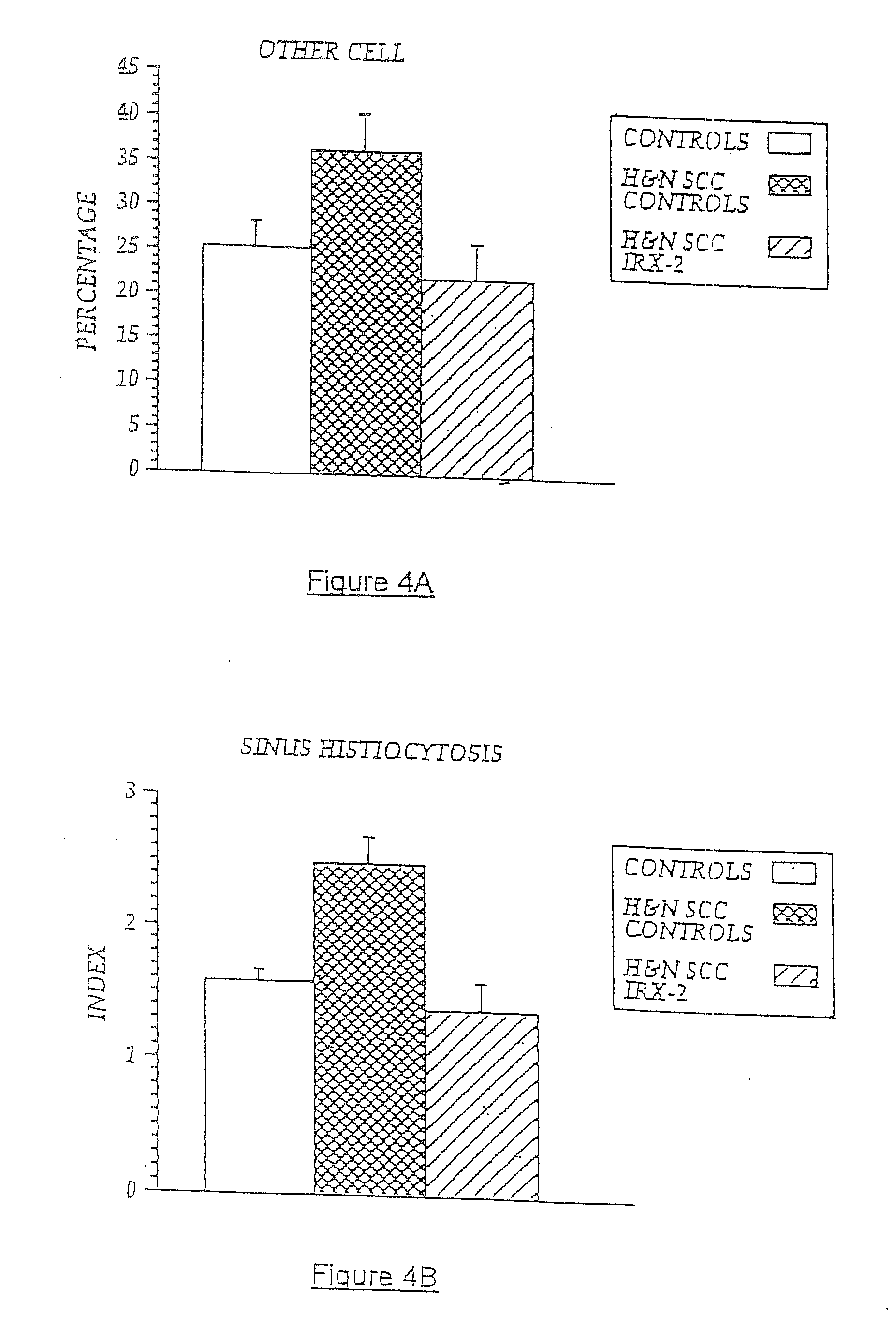Immunotherapy for immune suppressed patients
a technology immunotherapy, applied in the field of immunotherapy for immune suppressed patients, can solve the problems of cellular immunodeficiency, body is not able to effectively protect itself from harmful antigens, and body is not able to pro
- Summary
- Abstract
- Description
- Claims
- Application Information
AI Technical Summary
Problems solved by technology
Method used
Image
Examples
example 1
[0098]Local perilymphatic injections in the neck with NCM in addition to treatment with low dose CY (at 300 mg / m2), INDO (25 mg orally three times daily), and zinc (65 mg elemental zinc as the sulfate orally once a day) have induced clinical regressions in a high percentage of patients with squamous cell head and neck cancer (H&NSCC) (Hadden, 1994; Meneses, 1998; Barrera, 2000; Hadden, 2003; Menesis, 2003) with evidence of improved, recurrence-free survival. Overall, including minor responses (25%-50%), tumor shrinkage and reduction of tumor in pathological specimens, over 90% responded and the majority had greater than 50% tumor reduction.
[0099]These responses are speculated to be mediated by immune regression since both B and T lymphocytes were observed infiltrating the tumors. The therapy was not associated with significant toxicity. Treatment of lymphocytopenic cancer patients with the combination of NCM has resulted in marked lymphocyte mobilization; where analyzed, these patie...
example 2
Correction by NCM of T Lymphocytopenia
[0104]The objective of the following experiment was to assess the effect of a 10-daily injection treatment of NCM containing the six cytokines of IL-1, IL-2, IL-6, IL-8, IFN-γ, and TNF-α (115 units IL-2 equivalence / day) on lymphocyte counts (LC) of lymphocytopenic patients. These patients had recovered from prior surgery and radiotherapy for head and neck cancer, and had persistent lymphocytopenia with mean counts of 441 cells / mm3. Normal levels of LC are 2000 cells / mm3. The patients were free of cancer at the time of treatment. LC were obtained at day 0 and day 13. T lymphocytes (CD3+) and T cell subsets (CD4+ or CD8+) were assessed by cytofluorometry. Table II presents the data for five responding patients. Significant increases were observed for LC, CD3+, and CD4+ T cells.
TABLE IIPt. NumberTLC*CD3*CD4*CD8*11008328402136625255310063243410074331−205100166173−16Mean ± SEM107 ± 790 ± 19122 ± 5912 ± 15*Changes in number of cells per mm3 from day 0...
example 3
Correction by NCM of Dendritic Cell Defect(s) in Cancer
[0105]In previous experiments, lymph nodes from five NCM-treated H&NSCC patients and five untreated H&NSCC control patients were isolated and cellular constituents analyzed by flow cytometry using a panel of cell surface markers for dendritic cells (i.e., CD83+, CD86+, and CD68+). As noted above, sinus histiocytosis is a lymph node pathology seen in some cancer patients that is characterized by the accumulation in the lymph nodes of large histiocytes containing immature dendritic cells. As demonstrated in FIG. 6A, patients with SH (SH+) have an accumulation of CD68+, CD83+, CD86− DCs in their lymph nodes, while those without noticeable SH have few CD83+ cells. However, NCM treatment resulted in a five-times increase in the number of CD86+ (concomitant with CD68+, CD83+) DCs compared to non-treated cancer controls, indicating a conversion to an “activated” DC phenotype. Controls are untreated H&NSCC patients compared to NCM-treat...
PUM
| Property | Measurement | Unit |
|---|---|---|
| tumor shrinkage | aaaaa | aaaaa |
| tumor shrinkage | aaaaa | aaaaa |
| concentration | aaaaa | aaaaa |
Abstract
Description
Claims
Application Information
 Login to View More
Login to View More - R&D
- Intellectual Property
- Life Sciences
- Materials
- Tech Scout
- Unparalleled Data Quality
- Higher Quality Content
- 60% Fewer Hallucinations
Browse by: Latest US Patents, China's latest patents, Technical Efficacy Thesaurus, Application Domain, Technology Topic, Popular Technical Reports.
© 2025 PatSnap. All rights reserved.Legal|Privacy policy|Modern Slavery Act Transparency Statement|Sitemap|About US| Contact US: help@patsnap.com



